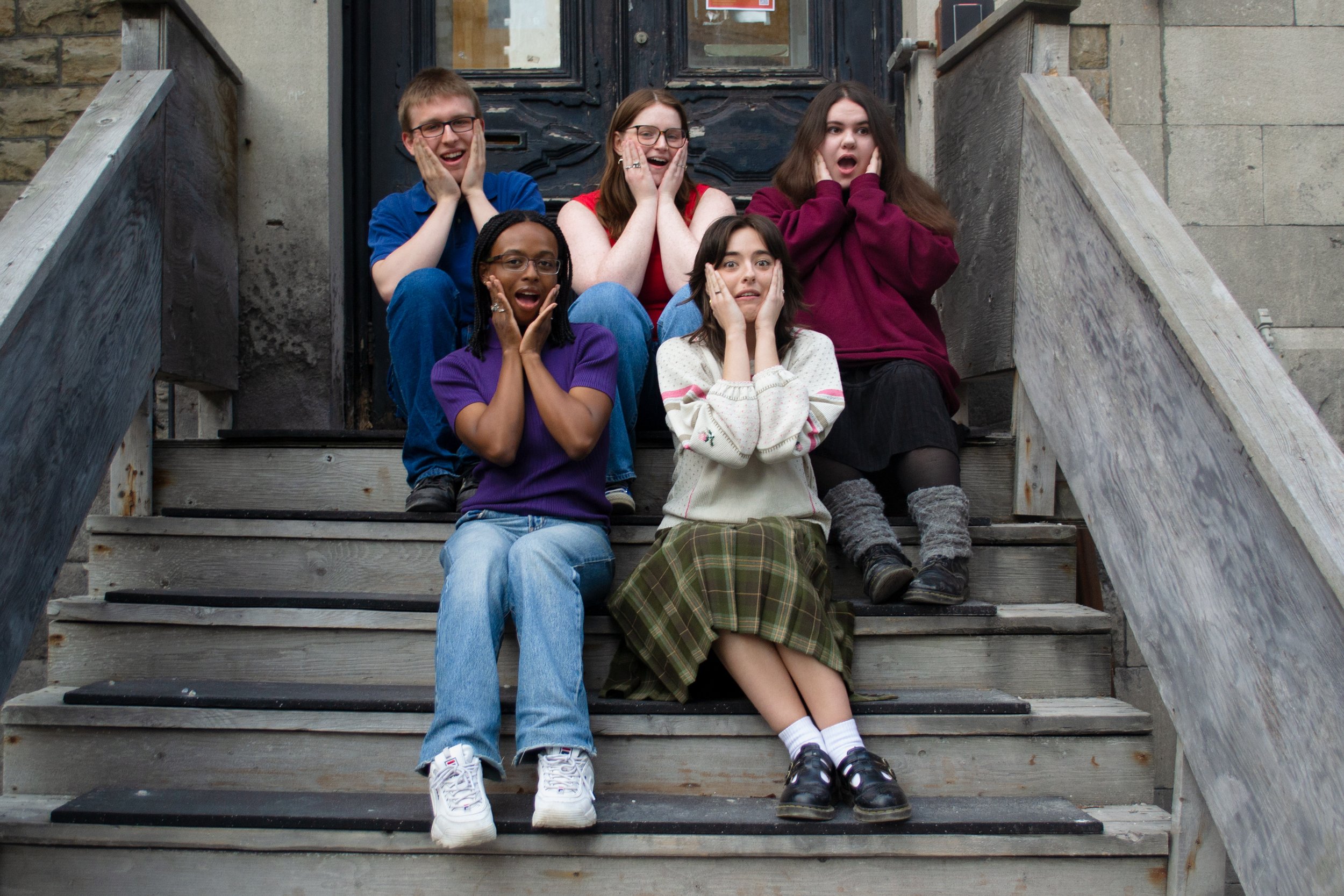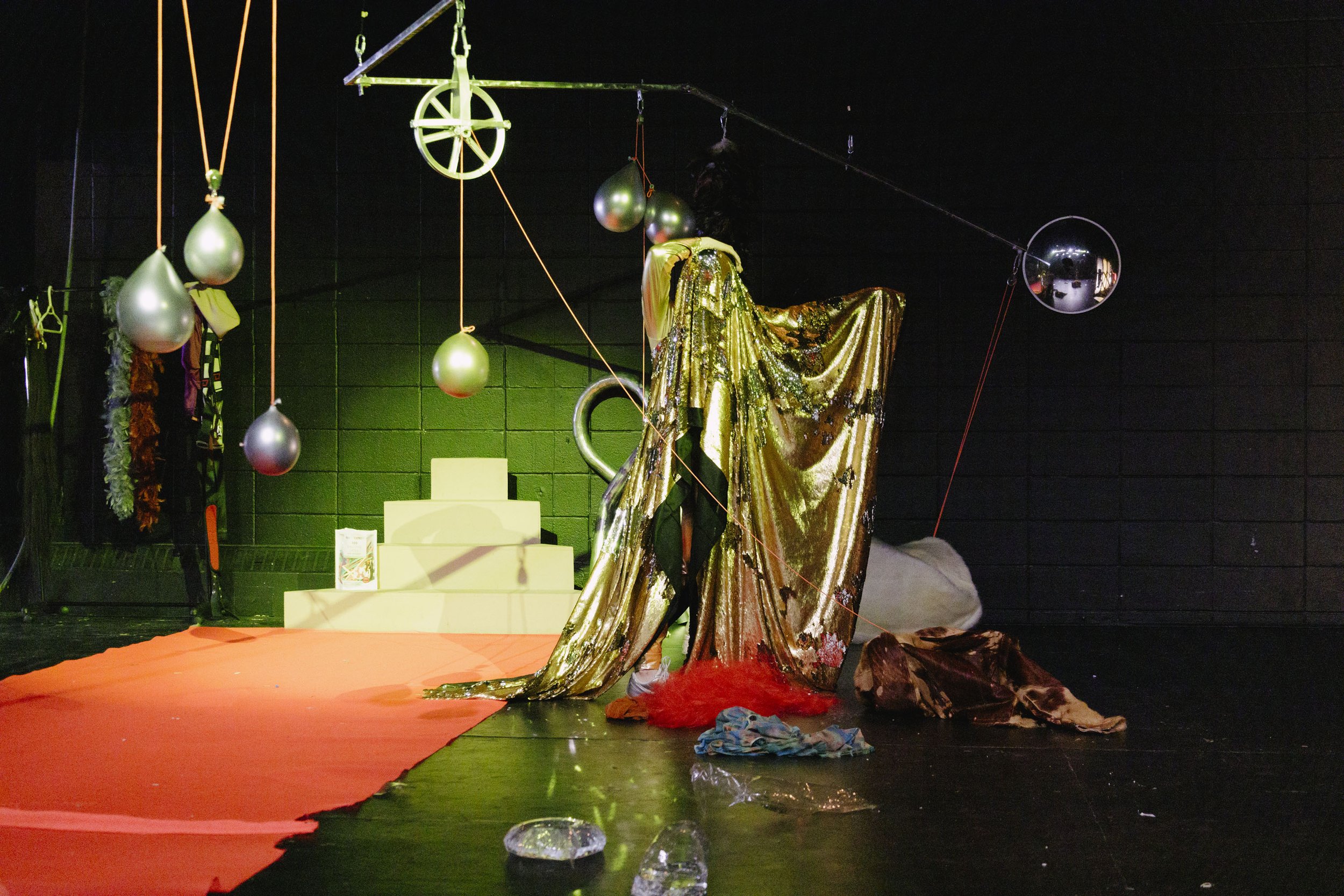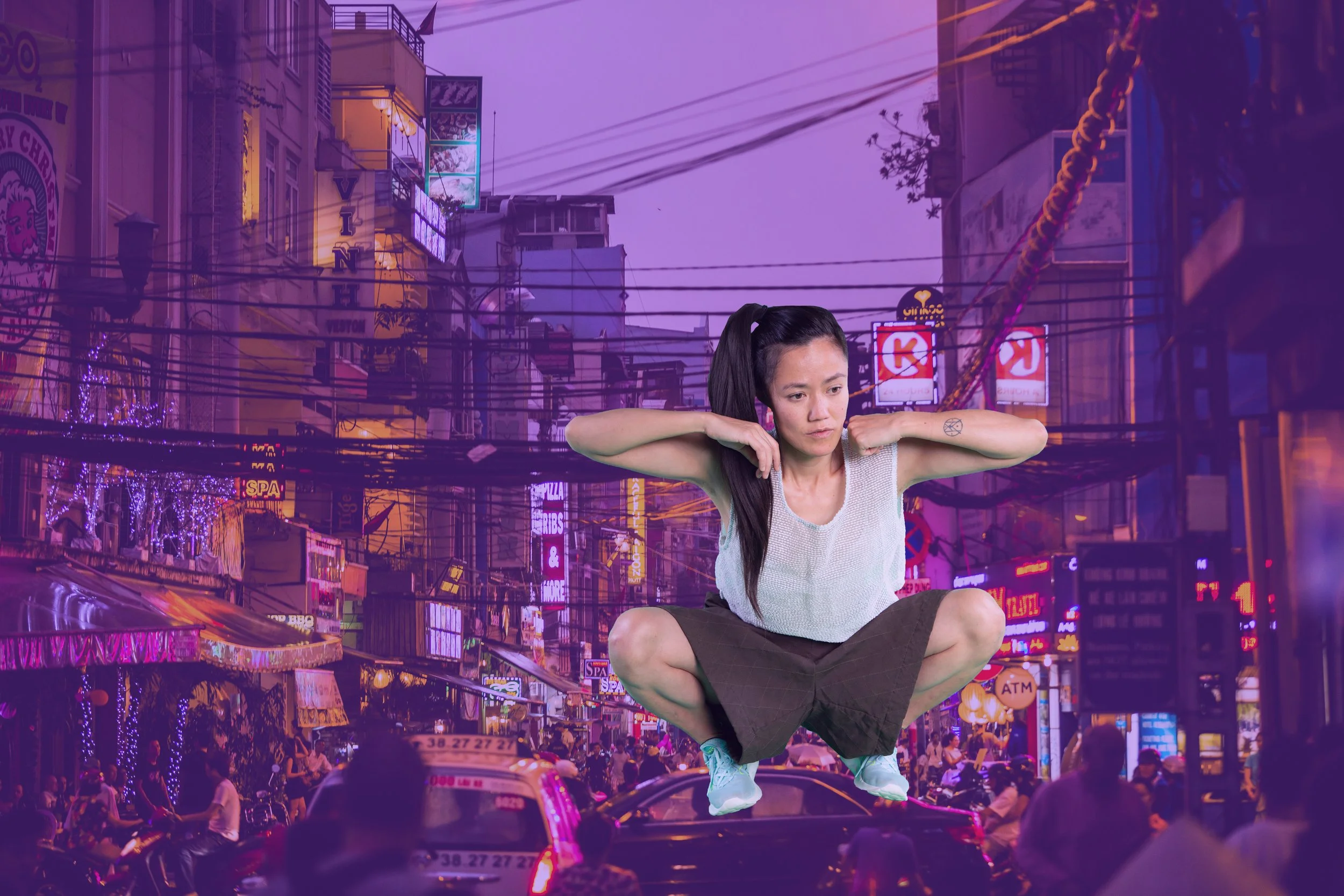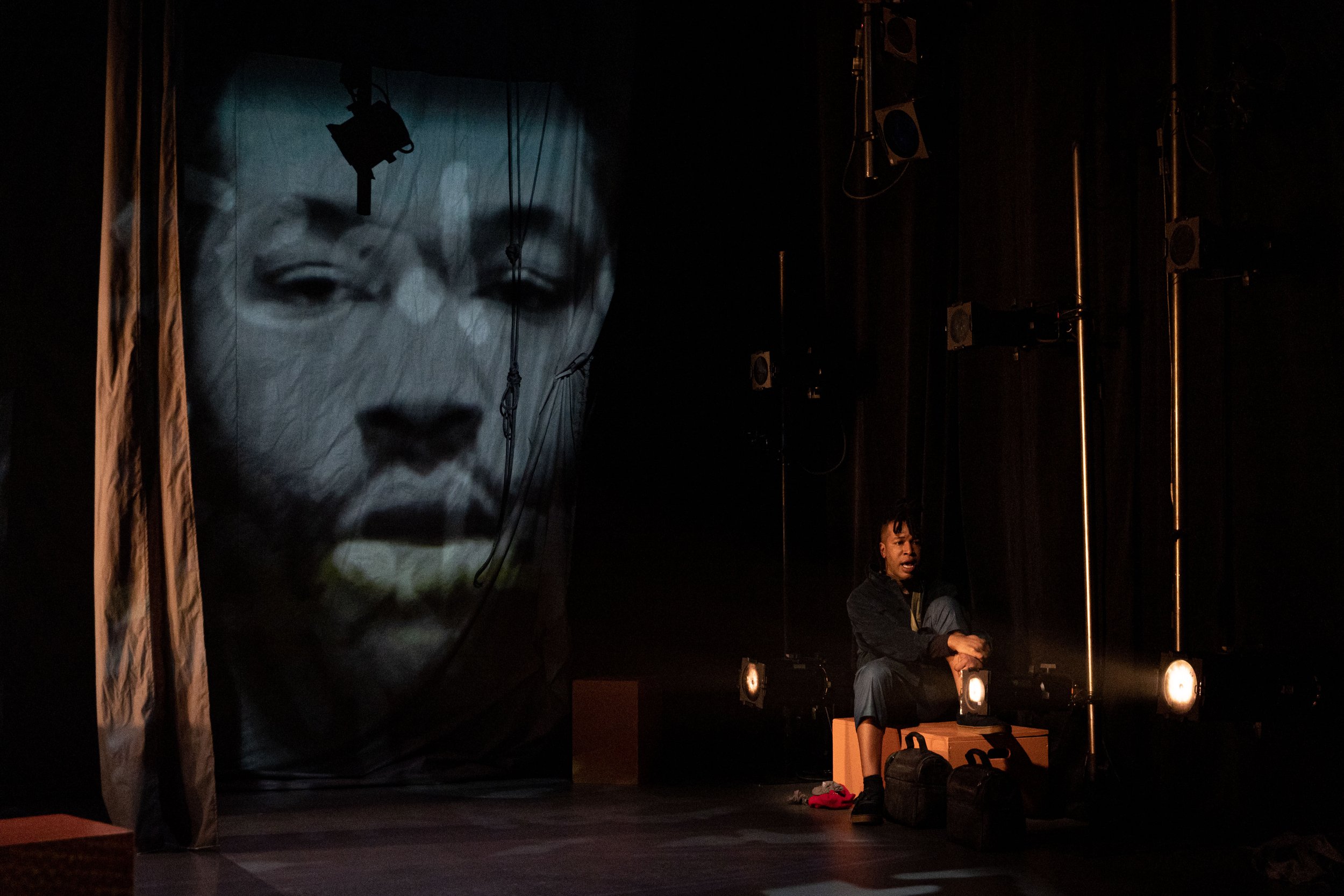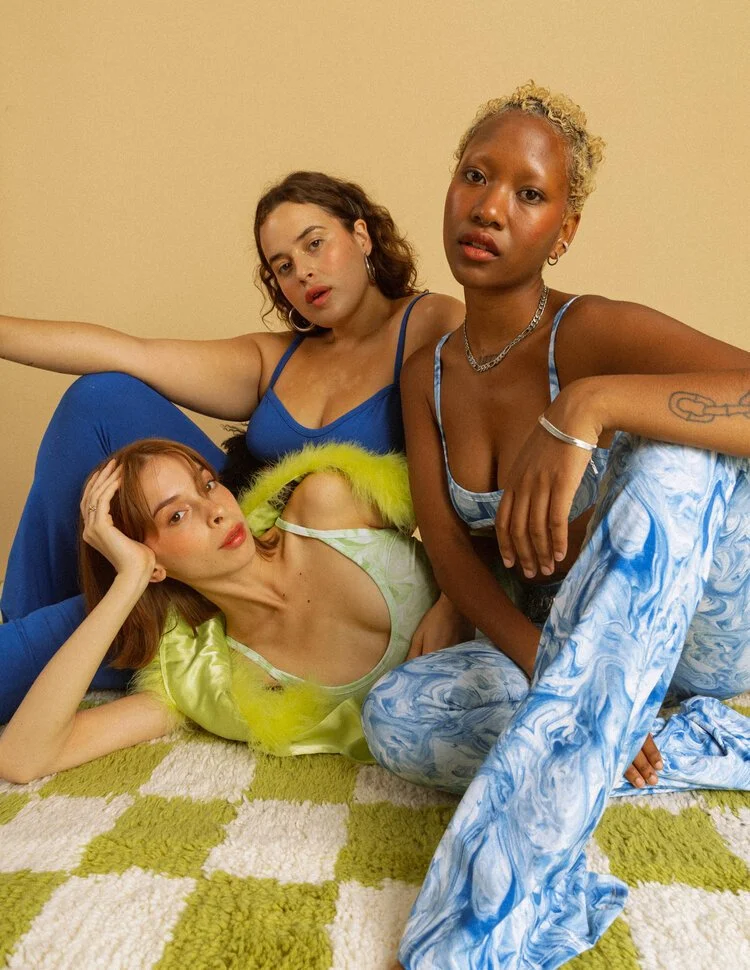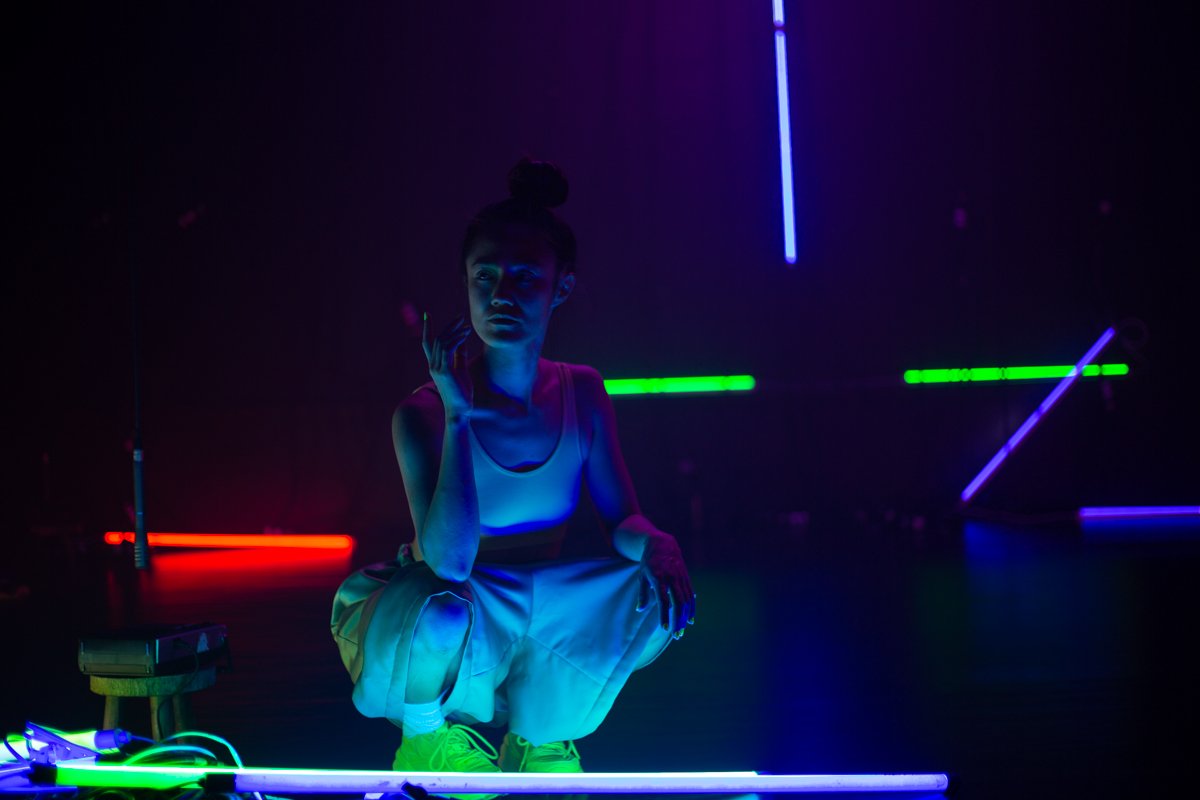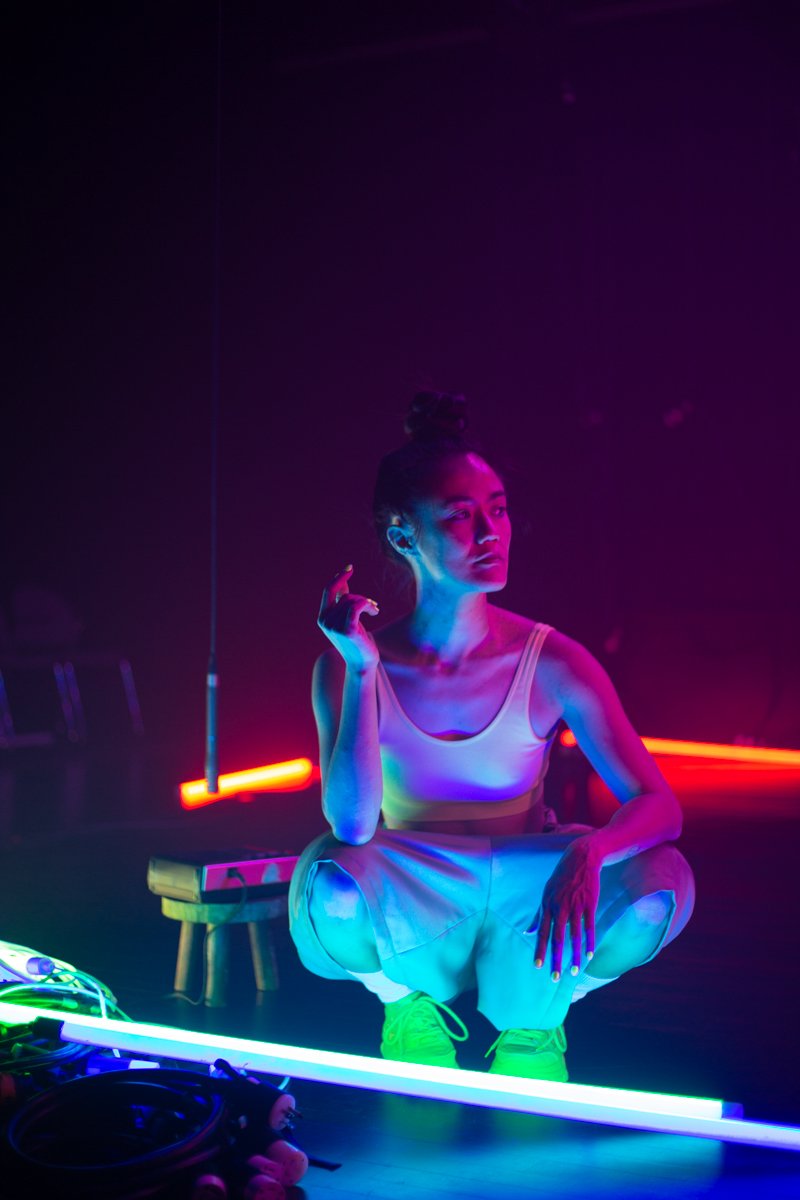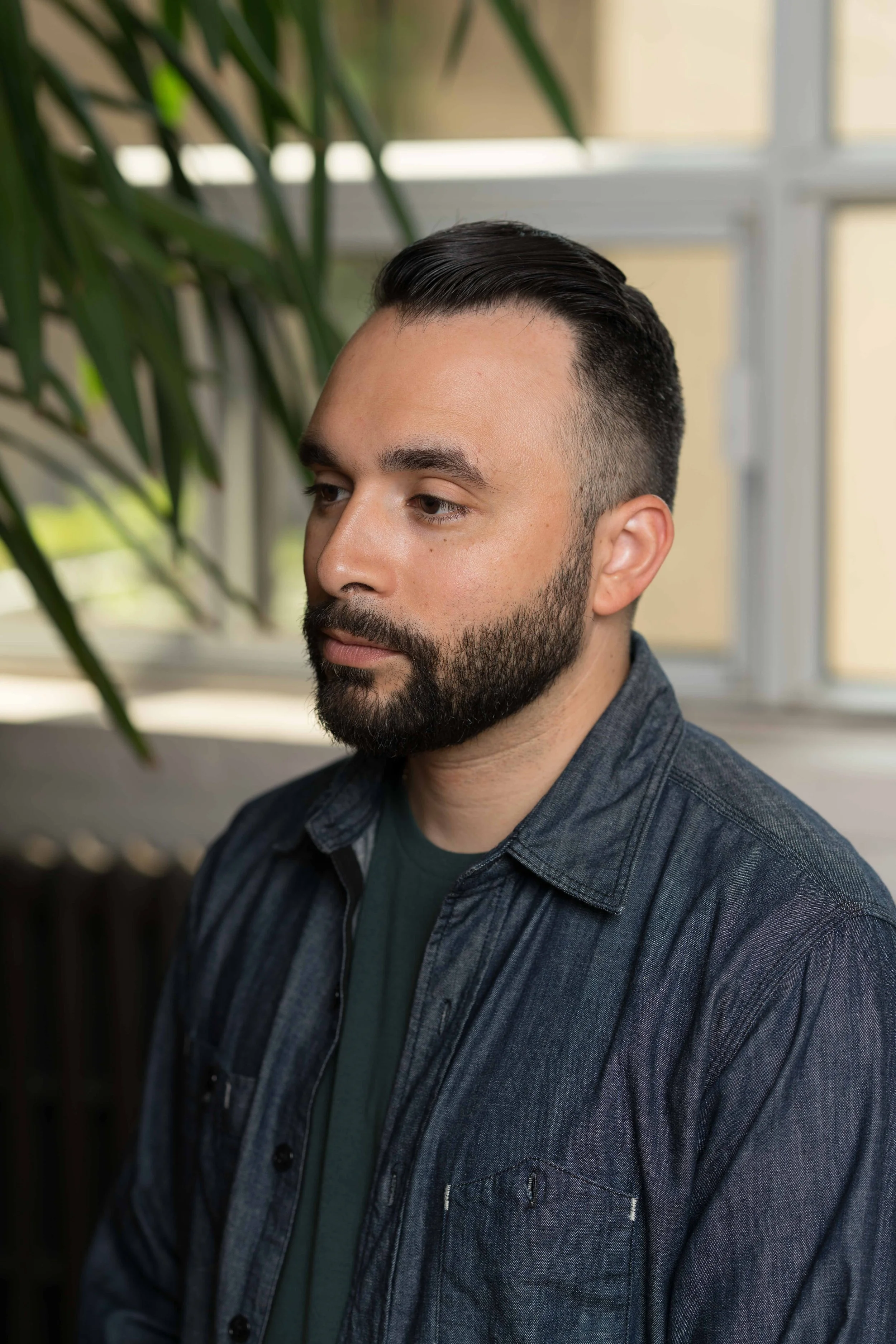Counter Offence Returns With Renewed Relevance (Teesri Duniya Theatre)
Oliver Price and Sophie-Thérèse Stone-Richards of the play Counter Offence. Photo courtesy of Brooklyn Melnyk
It’s something rare and special to see an original work of theatre remounted in a new era. Counter Offence originally premiered here in Montreal in the 1990s, written by Rahul Varma and directed by Jack Langedijk, and produced by a then-new Teesri Duniya Theatre, and its comeback in 2023 is timely.
The play follows the form of a police procedural, but deviates in refusing to privilege the police’s perspective in its unfurling of a murder mystery. A young Iranian man, Shapoor (played by Arash Ebrahimi), assaults his wife Shazia (Amanda Silveira), and his progress in obtaining Canadian citizenship is jeopardized by the legal process that Shazia is advised to take in order to be safely separated from him. Advising Shazia in her journey is social worker Clarinda (played by Sophie-Thérèse Stone-Richards), with much-involved pressure from her parents (played by Ambica Sharma & AJ Richardson). Adding to the rising pressure cooking in this piece is a passionate police officer, Galliard (Oliver Price)—lauded cautiously by the social worker for his ferocious work in the domestic violence department—and his supervising officer (Howard Rosenstein). Into this fray saunters the charismatic lawyer Moolchand (Aladeen Tawfeek), who tries to mine positive police reform (and a great career move) by representing Shapoor, insisting that the police force’s history of systemic racism was used against him.
Ambica Sharma and Andrew Joseph Richardson of the play Counter Offence. Photo courtesy of Brooklyn Melnyk
For a story so caught up in “the system” and its flaws, “the law” and its slipperiness, and the State of Quebec and its shortcomings, Counter Offense has a glowing heart radiating out from its stage. Set designer Marie-Eve Fortier puts the audience in a jury’s box on either side of an alley staging while maintaining the warm familial homestead of Mr. & Mrs. Begum where they try (and fail) to keep Shazia safe from Shapoor. Across from this hearth is the promise of safety in Clarinda’s office, similarly carpeted and cozy. Then, there are the desks of the police and legal representatives, where the flags of Quebec and Canada do the subtle stating of the power that calls itself justice.
Testimonies from every character in this ensemble run throughout the story as it jumps back and forth in time, and director Murdoch Schon gives their cast the beautiful opportunity to engage with each other’s bodies in expressive, dancerly movements. Throughout the play, limbs encircle the characters and their body weight is gently buffeted with and without narrative relationships. This artistic flourish broke the mold of the murder mystery into a more theatrical representation of the disparate power of testimony: from police, from lawyers compared to that of immigrants, and from women. These movement interludes were not always necessary, but they were consistent, impressive, and interesting.
Counter Offense seems in many ways like the perfect comeback show for Teesri Duniya Theatre. The theatre company co-produced the immersive, site-specific piece Meet Me that took audiences all over McGill’s campus with a cast of three, but it is so refreshing—and increasingly unlikely—to see a cast of eight on stage as we did at the Segal Centre. The number of actors manages to smooth out the notable difference in the strength of performance. Principle plot lines let inter-generational conflict play out, and this is where weaker characterization and performance manage not to hamstring the show as a whole, being balanced so well by the veteran actors graciously anchoring the story’s rhythm and pacing if younger ones fall out of sync. Counter Offense was a crackling finisher for the Teesri Duniya Theatre 2022-23 season. They have yet to announce their next production, but are currently hosting the second cycle of their Global Dialogues series.



